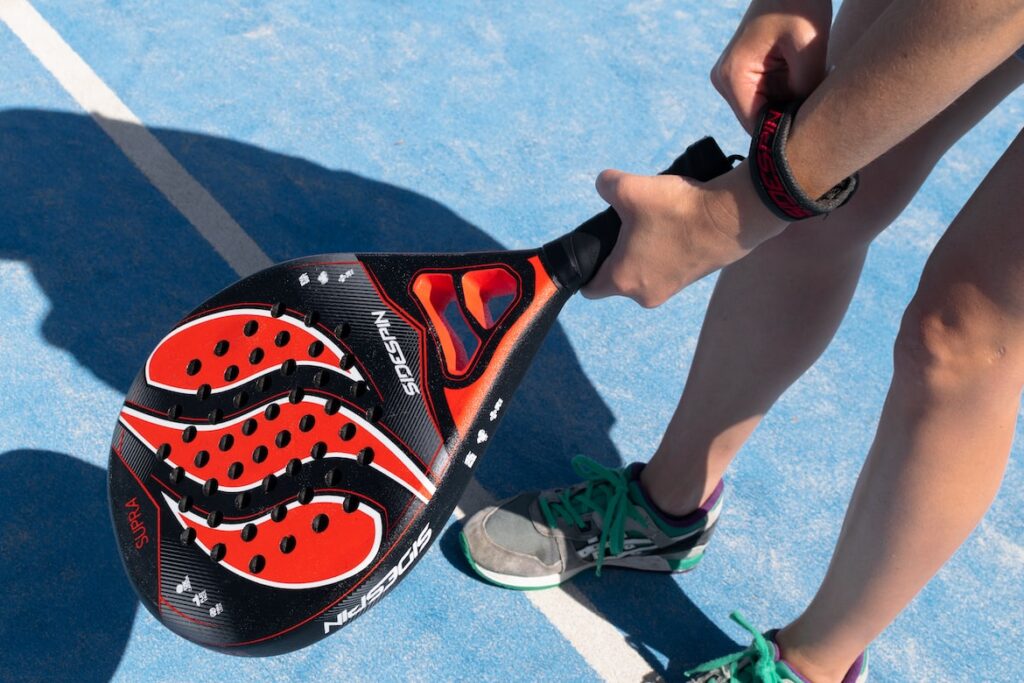Padel for Beginners: The Essential Techniques and Rules Explained
3 min read
Padel for Beginners: The Essential Techniques and Rules Explained
Introduction
Welcome to the beginner’s guide to padel – the exciting and rapidly growing sport that combines elements of tennis and squash. Whether you’re new to racket sports or looking to try something different, padel offers a fantastic way to stay active, have fun, and meet new people. In this article, we’ll take you through the essential techniques and rules of padel, giving you the confidence to step onto the court and start enjoying this addictive game.
The Basics: How to Play Padel
Before we dive into the techniques, let’s quickly go over the basic rules of padel. The game is played with four players, two on each side of a net. The court is smaller than a tennis court, enclosed by glass walls, and has a lower net. Padel rackets are solid with no strings, and the balls are similar to tennis balls but slightly softer.
The Serve
The serve is one of the most crucial parts of the game. Start by standing behind the baseline, throwing the ball up with your non-dominant hand, and hitting it diagonally into the opponent’s service box. The ball must bounce once before your opponent hits it back. Remember to aim for accuracy and placement, rather than power, as control is key in padel.
Volley and Smashing Techniques
Once the ball is in play, you’ll find yourself volleying more often than not. The volley is when you hit the ball before it bounces. Keep your body square to the net, with a relaxed grip on the racket. Use short, controlled swings to direct the ball where you want it to go. Avoid over-hitting and focus on timing and precision.
When the opportunity arises, you can use the smash technique to put the ball away. The smash is a powerful overhead shot that aims to hit the ball downward towards your opponent’s side of the court. Use your dominant arm, step forward, and unleash controlled aggression to execute this shot with finesse. Remember, timing is crucial, so wait for the right moment to smash the ball.
Wall Play and Strategy
One of the unique features of padel is its glass walls. You can use these walls to your advantage by playing off them strategically. If your opponents hit the ball high and close to the wall, try bouncing it off the wall to create an unexpected angle. Be aware that your opponents can do the same, so be prepared to track and react to these shots.
Another essential aspect of padel strategy is positioning. Work on your footwork to ensure you’re in the right place at the right time. Keep a balanced stance, ready to move quickly in any direction. Anticipate your opponent’s shots and adjust your position accordingly. Communication with your partner is key, so make sure to talk and coordinate your movements effectively.
Common Mistakes to Avoid
As with any sport, beginners often make some common mistakes when starting with padel. Avoid falling into these traps to accelerate your progress and enjoyment of the game:
- Gripping the racket too tightly: A loose grip allows for better feel and control of the ball.
- Over-hitting the ball: Focus on precision rather than power, as accuracy is crucial in padel.
- Staying too far back: Move closer to the net to cut down your opponents’ angle of attack.
- Not practicing footwork: Good footwork is the foundation of padel, so dedicate time to improve your agility and positioning.
- Forgetting the fun: Remember, padel is all about enjoying yourself. So, relax, have fun, and embrace the learning process.
In Conclusion
Congratulations! You are now equipped with the essential techniques and rules to kick-start your padel journey. Remember, as a beginner, it’s normal to make mistakes and take some time to hone your skills. Practice regularly, seek guidance from experienced players, and most importantly, enjoy the game. Padel is a sociable and inclusive sport that brings people together, so grab your racket, gather some friends, and hit the court. We’ll see you there!






